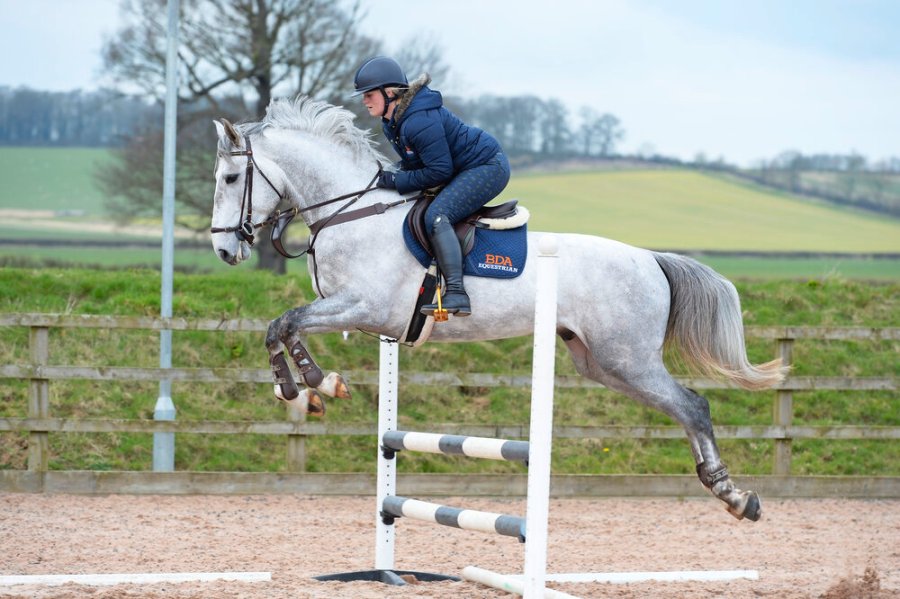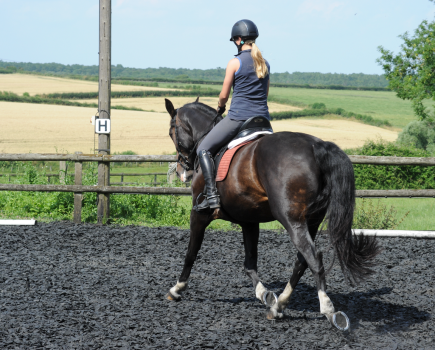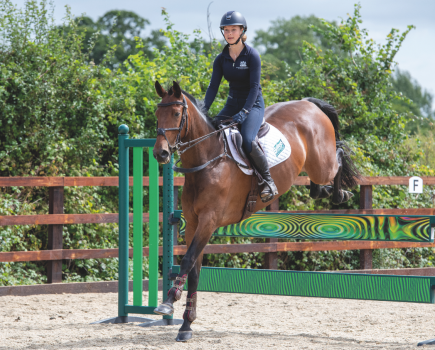If your horse lacks accuracy when jumping, this can make the whole experience seem daunting. Whether he struggles to stay straight, lacks rhythm or knocks poles, it can all make for a bumpy ride and knock your confidence as a rider. Eventer Anthony Clark shares three exercises he uses to help his horses improve their accuracy:
Exercise 1: Use poles to lift his legs
Using ground poles as part of your warm-up is an effective way to encourage your horse to lift his feet.
“This exercise gets your horse thinking about where his legs are,” explains Anthony. “Don’t worry if he knocks the poles the first couple of times, he’ll soon learn and be more aware of them the next time.”
Once you’ve warmed up on the flat, ride the following exercise.
Set it up: Place three poles down the long side of your arena or paddock, slightly in from the track at 2.7m apart.
How to ride it
- Go large in canter to establish a nice even rhythm.
- Come in off the track, look ahead to the poles and maintain an even rhythm on your approach to them, making sure your horse is in front of your leg.
- Canter over each pole.
- Return to the track, then change the rein and repeat in the opposite direction.
The next level: Try this in counter canter to improve your horse’s balance.
Exercise 2: Get him listening to your body
“This exercise is ridden in an arc shape and encourages your horse to turn towards the jump without you having to pull him,” says Anthony. “Use your bodyweight to tell him where you want to turn and avoid pulling with the reins.
“Jumping on an arc also helps to engage your horse’s inside hind leg as he goes around the corner. If his hind legs are engaged, this will give him more power to push himself over the jump.”
Set it up: Place an upright or plank fence at a height you feel comfortable with on a 20m circle. Use a placing pole before and after the jump, each three strides (3m) away from the fence.
How to ride it
- Canter large around your school, looking ahead for your jump.
- As you turn onto a 20m circle and approach the fence, turn your head and shoulders in the direction of it, shifting your body weight to ask your horse to ride in the direction of the arc.
- Canter over the centre of the first placing pole and jump the fence in the centre.
- After the fence, sit up and continue to ride around on the 20m circle.
- Change the rein and repeat.
The next level: Set up three more jumps, on each quarter of your circle, to practise landing and approaching a fence on a turn.
Exercise 3: Keep him straight
This final exercise puts together a grid of fences and tests your horse’s approach and shape over the fence.
“Here we have two uprights followed by a parallel,” says Athony. “Jumping different fences teaches your horse to adapt his shape.”
Set it up: Place two upright fences at a height you feel comfortable with, two canter strides (10m) apart down the long side of your school. Place a parallel oxer one canter stride away (5m) from the second upright.
How to ride it
- Canter around your school, maintaining an even rhythm as you approach the grid.
- Sit up on your approach, keeping your hands soft and your leg on.
- Jump the first upright and sit up as soon as you can after, aiming for two canter strides to the second jump.
- Jump the second fence.
- Sit up and ride one canter stride towards the oxer.
Meet the expert: Anthony Clark is an event rider who has competed at several four-star events, including Blenheim, and was selected for the Nations Cup team in 2017.









